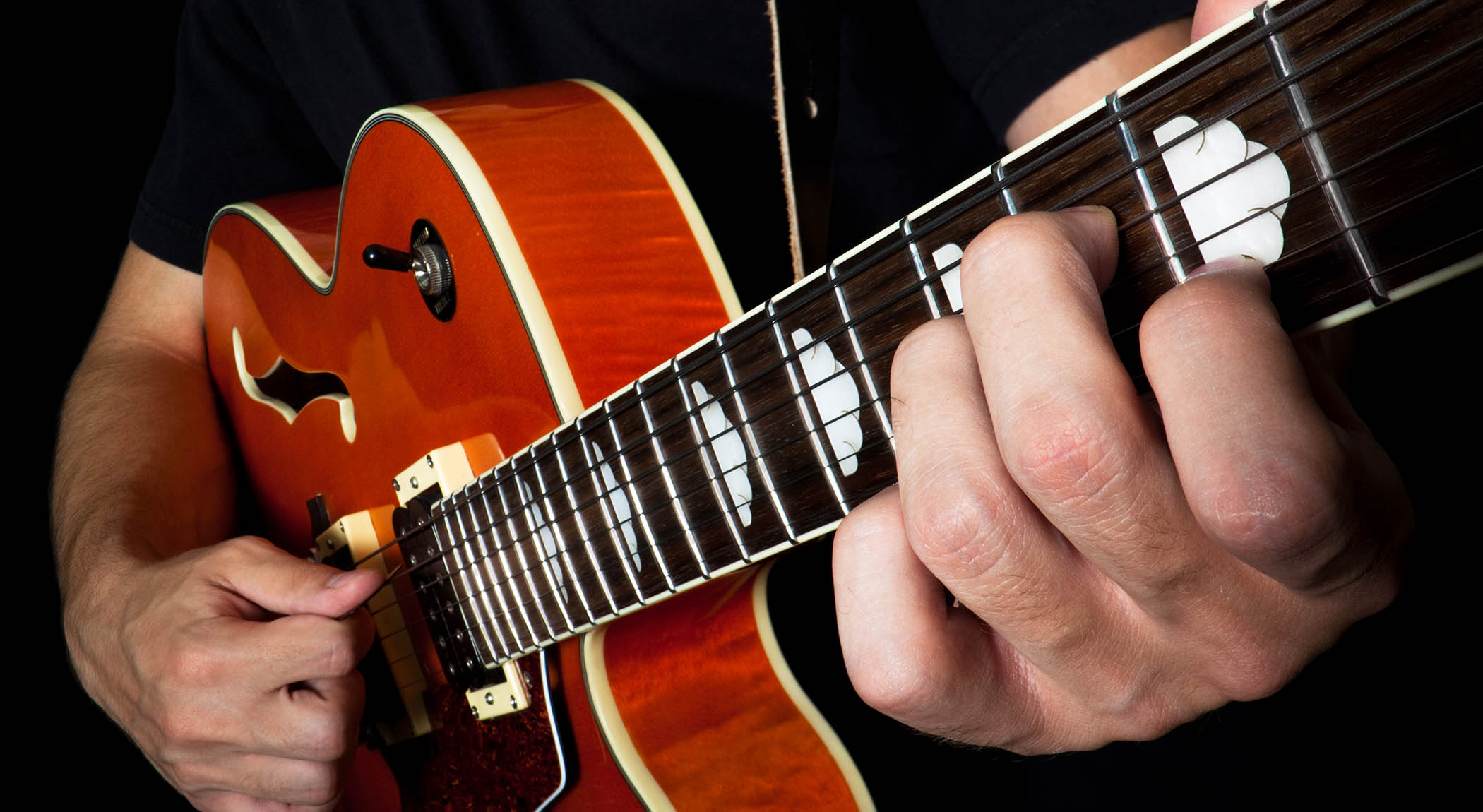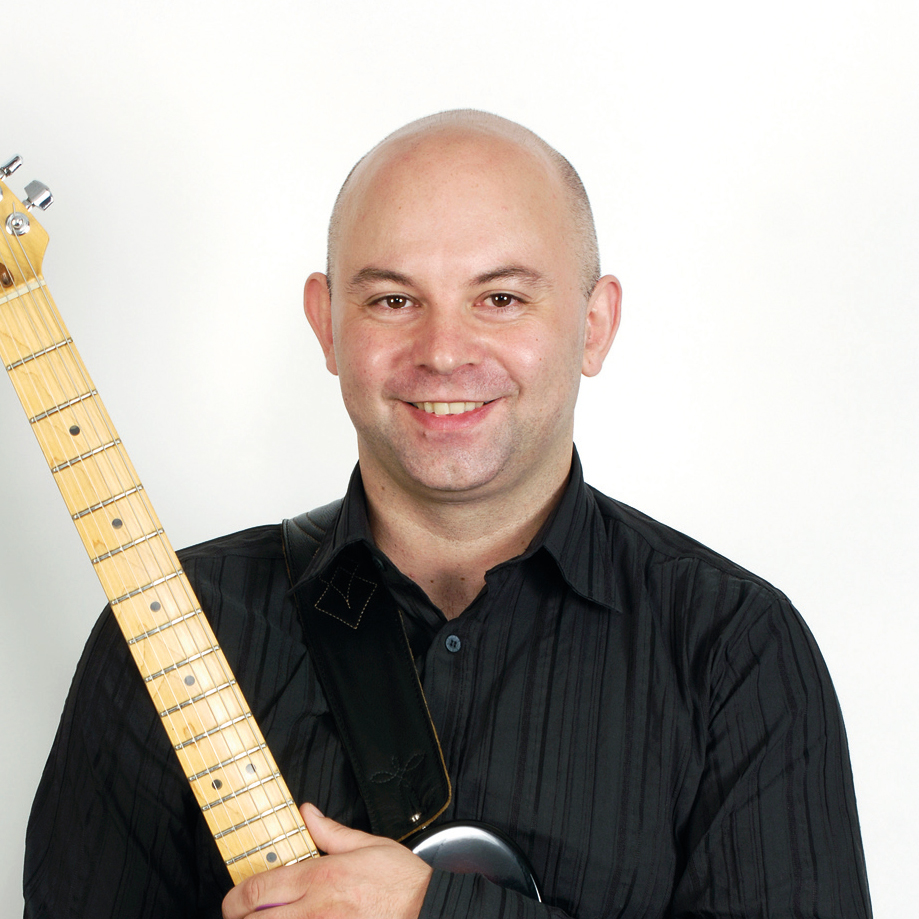“His style draws from the best of the best of jazz guitar through the ages”: This in-depth tutorial inspired by the great Bruce Forman will expand your lick vocabulary and harmonic understanding, and boost your improv skills
Bruce Forman is a jazz guitar master, and these four mini-pieces in his style walk you through soloing strategies and chord choices, sharpening up your technique along the way

Bruce Forman is a jazz guitar master, with a CV that includes time with jazz heavyweights such as Ray Brown and Bobby Hutchinson, soundtrack recordings on not one, but three movies directed by Clint Eastwood, and a steady stream of successful recordings as a bandleader to his name.
We should also acknowledge Forman’s hugely successful career as a teacher, with a significant online presence alongside his role as an acclaimed educator in residence at USC’s Studio/Jazz department.
In recent years, he’s divided his time between his trio project with bassist John Clayton and drummer Jeff Hamilton – celebrating the music of his one-time mentor, the legendary Barney Kessel, whose guitar Forman now owns – his popular podcast with fusion ace Scott Henderson, his original Red Guitar Project, and even a YouTube TV series, GrumpsTV.
He’s also an author, storyteller, comedian, and novelist, so it’s fairly safe to assume Forman is a very busy man indeed.
All this activity aside, the reason why we’re interested in Mr. Forman here is because he’s an absolutely phenomenal guitar player and an immensely creative musician. His style could be considered as classic, drawing from the best of the best of jazz guitar through the ages, ranging from Charlie Christian, Django, and even earlier, with touches of Wes Montgomery, Joe Pass, and most definitely Barney Kessel.
Forman has studied his art meticulously and while he’s acutely aware of pretty much every significant player from within this idiom, he makes it his own and has a clear musical personality, and harmonic and rhythmic sensibility.
Perhaps his greatest influence is the bebop alto saxophone player Charlie Parker, and when we consider that his earliest musical experience was with classical piano, we can begin to see how his unique voice on the instrument began to form.
One point that Forman continually stresses whenever he speaks about his own personal musical journey is the importance of community. So much of his learning took place on the bandstand, at the after-hours jam session, or even just hanging with other like-minded, and often older and more experienced, players.
In preparation for this article I’ve spent possibly as much, if not more, time listening to Forman talk about music than I have listening to him play. Both experiences have been compelling, engaging, and rewarding, so I’d encourage you to do the same if you possibly can.
The musical examples that follow are divided into four distinct sections. First, we’re looking at a selection of five approaches that Forman might employ when creating melodic lines against a four-bar common sequence in the key of F Major, with just bass and drums for accompaniment.
In the next section we switch our attention to more chordal based musical ideas, again structured as a set of five independent musical options. In the third example we define some technical strategies to promote developing facility and range, and we conclude with a contextualized musical study against a longer sequence, although again in F. Good luck!
Get the tone
Amp Settings: Gain 3, Bass 6, Middle 5, Treble, Reverb 4
Forman uses a variety of archtop guitars, but most famously now owns Barney Kessel’s 1946 Gibson ES-350. To recreate his tone ideally, you’ll need flatwound electric guitar strings, with the guitar’s neck pickup into a full-bodied clean amp with just a smidgen of reverb. Try turning the tone down a little to reduce some of the high end without the sound becoming muddy and dull.
Technique focus
While it’s valid to throw caution to the wind and go for it when creating an improvised solo, there’s also a case for considering what your options might be in advance. This can be useful in many ways. First, you can feel confident that you can rely on familiar ideas, concepts, lines, rhythmic devices, and anything else you can imagine.
Secondly, you can allocate a particular sound, technique, or harmonic application. A good example of this is Django Reinhardt’s multiple recordings of his tune, Nuages, where his first chorus usually started with an exploration of artificial harmonics. When you’re playing over a repeated form, referred to in jazz as a ‘chorus,’ it’s often good to have some kind of idea of how many choruses you intend to play and how you might structure them.
This will give your solo shape, you’ll know when to build and when to wind things up, rather than just going 'round until you run dry, ending usually with your weakest ideas.
Don’t share this with the ensemble beforehand, so you can change your mind if a moment of inspiration hits and you decide to take another journey around the changes. I’ve often found that having musical ‘bullet notes’ gives me the security to ignore this rehearsed structure and be completely in the moment, knowing that I can always return to my tried and tested ideas if I need to.
Example 1
Let’s begin with five approaches that Forman might adopt when creating lines against a progression in F Major. We begin in 1a) with some chromatic bluesy ideas, progressing to more chord tone based bebop inspired guide tones in 1b). 1c) is a common Forman device, creating unbroken lines from streams of triplets.
It’s Altered scale (R-b2-#2-3-b5-#5-b7) and tritone substitute (F#7 against C7) in 1d), before ending with a double-stop arpeggio line full of tension and release.
Example 2
Forman’s chord knowledge is broad and he moves deftly between single notes and polyphonic ideas with ease. Here we see five ideas, beginning with some block parallel motion in 2a), reminiscent of big-band horn arranging.
In 2b), we keep a high F note ringing while the voicings move around underneath to outline the harmony, in contrast with 2c) where, with the exception of the opening voicings, our objective is to create motion in this highest note, although you’ll also spot some semitone connections across the other strings also.
In 2e) we see a little of the influence of the great Jimmy Wyble, with two independent melodic voices moving at different rates and in opposing directions, before rounding things off with a line that blends single-note melodic ideas with answering chord voicings, possibly something naturally assimilated from his earliest musical experiences on the piano.
Example 3
Here are five exercises designed to promote technique, fluency, and creativity. We begin in 3a) with a note pool that combines the F Major Blues scale (F-G-Ab-A-C-D) and F Minor Blues scale (F-Ab-Bb-B-C-Eb), to create a chromatically connected super-set that combines both sounds.
In 3b) we explore the guide tone potential when moving between two II-V progressions, leading us back to F. Example 3c) explores the potential of using C Altered scale, or C Superlocrian (seventh mode of Db Melodic Minor – C-Db-Eb-Fb-Gb-Ab-Bb), along with the V7 superimposed from the tritone (Gb7 over C7).
For our final two chordal examples, 3d) and 3e), we’re exploring semitone altered voice leading against a II-V-I in F, followed by V7b9 to tonic 6th connections with appropriate four-note chord voicings.
Example 4
We end with a contextualized piece against a typical 16-bar progression in F Major with a four-bar intro.
Whereas Forman’s playing is beautifully organic – and he’s always willing to take his time and really develop each idea fully – here we have taken the five soloing device themes we saw in Ex. 1, followed by the five chordal ideas from Ex. 2, and shoehorned each into a connected two-bar composed lick, phrase, or chordal idea.
We’d encourage you to begin by learning this as is, almost like a technical etude. Once you’ve got this under your fingers and you understand the reasoning behind each idea, you could try improvising against the backing with each concept or approach in turn, expanding the potential of each topic to get as much mileage from it as you can.
This will inject your own imagination and personality into your playing, while taking inspiration from Forman's considerable vocabulary and expansive lickbag.
Get The Pick Newsletter
All the latest guitar news, interviews, lessons, reviews, deals and more, direct to your inbox!
John is Head of Guitar at BIMM London and a visiting lecturer for the University of West London (London College of Music) and Chester University. He's performed with artists including Billy Cobham (Miles Davis), John Williams, Frank Gambale (Chick Corea) and Carl Verheyen (Supertramp), and toured the world with John Jorgenson and Carl Palmer.
“There are so many sounds to be discovered when you get away from using a pick”: Jared James Nichols shows you how to add “snap, crackle and pop” to your playing with banjo rolls and string snaps
How to find new approaches to blues soloing – using fingerstyle improv ideas and Roy Buchanan-inspired licks











![Joe Bonamassa [left] wears a deep blue suit and polka-dotted shirt and plays his green refin Strat; the late Irish blues legend Rory Gallagher [right] screams and inflicts some punishment on his heavily worn number one Stratocaster.](https://cdn.mos.cms.futurecdn.net/cw28h7UBcTVfTLs7p7eiLe.jpg)


